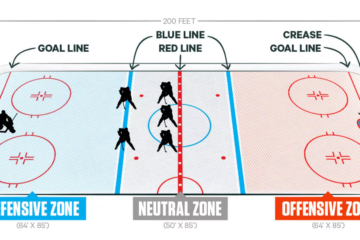For the 2023 Trade Deadline (from Jan 30 to Mar 3), 65 trades took place with 122 players moved and 76 draft picks acquired. All but one team, the Florida Panthers made trades through trade season. Chicago made the most at nine and Seattle made just one. Currently, only one team has made a move since the trade deadline, which was the Nashville Predators, which I’ll touch on.
How is a trade made?
After two teams have decided on a trade, the teams must contact the League office. The office then schedules a call with the teams to review the transaction and give final approval. Prior to the call, the League makes sure the teams have enough salary cap space to make the deal.
During the call, the League will a) review the terms of the player contracts and make the acquiring team aware of possible obligations; b) ensure that, if a player had a no-trade clause, the player has waived that right; and c) verify any conditions of the transactions have been clearly defined and agreed upon.
After the trade call has taken place, the trade becomes official.
When can teams make trades?
Trades can happen essentially every day of the year except for the nine-day Christmas Trade Freeze. Most trades take place right before or on Trade Deadline Day which signals the end of trades for players that could still play for your team.
Given that there are only five League officials who can conduct the calls, trades just have to be presented to the office by 3 pm ET that day, but the call could take place after the 3 pm ET deadline.
If a trade is decided upon after the 3 pm ET deadline, the trade can still occur, but the player(s) involved are not allowed to play in the NHL for the remainder of the season, including playoffs.
This is what happened in the most recent trade with the Nashville Predators. On March 8th, the Preds made a trade to acquire Anthony Angello from the St. Louis Blues for future considerations. Given that is trade happened after March 3rd, Angello is no longer eligible to play in the NHL but instead will be playing in the AHL (American Hockey League) instead.
Can a player refuse a trade?
Long story short, no. If a player doesn’t want to go where they were traded to, they would be suspended and lose their salary. A player, however, could negotiate a No Trade Clause (NTC) into their contract that would prevent them from being traded to certain teams. After a player’s first seven seasons or has turned 27, they can negotiate an NTC into their contract.
Contract Clauses
There are two types of NTCs: limited and full. A limited NTC gives a player a say on a certain number of teams they can’t be traded to. Whereas, a full NTC required consent of the player if they were to be traded to another team.
A player could still be traded to a team that was listed on their no-trade list. This happens most around the Trade Deadline. If a team knows they won’t be making the playoffs, they could be approached by their management asking if the player would want to waive the NTC to get traded to a team with a playoff spot.
Another clause a player could negotiate into their contract is a No Movement Clause (NMC). This is similar to the NTC, but in addition to needing the player’s consent to be traded, a team could not put the player on waivers to be sent down to the minors.
Waivers are the transaction process required to move players down to the minors. When a player is put on waivers, any team may “claim” them for their own team. If a player clears waivers, then they are more than likely sent down to the minor team.
This gives a player full rights as to where they can and cannot play. The only leverage the team then has over the player would be the buy out their contract in the offseason. This would mean the player would still receive two-thirds of the money owed to them on their contract.
If you have any further questions, be sure to submit a Fan Question form! And don’t forget to subscribe to my email!


